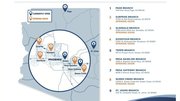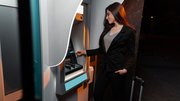News
Windows ATMs easier to keep up, running
April 7, 2005
Many ATM deployers considering Windows-based machines are probably thinking more about new functionalities like check imaging than about nuts and bolts.
But Windows also may make it easier to keep ATMs up and running, say vendors and service companies.
PNC Bank has had fewer service calls on its Windows-based machines than on its OS/2 models, said Shelly Chandler, the bank's vice president of ATM banking. When techs do visit the ATMs, they spend less time there because menu-driven diagnostic tools make it easier for them to pinpoint problems.
"We're seeing fewer instances where they need to identify the problem by the process of elimination," she said.
Matthew Burns, senior vice president of electronic banking for National City Bank, said diagnostics are far simpler, even for the National City personnel who handle first-line issues at branches. In addition, second-line calls to branches - escalated when personnel don't have time to figure out what was causing the problem -may decrease, he said.
The capability to run some diagnostics remotely will be a boon to service providers, said Ed Hovan, owner of Bear Financial, a third-party service company that has installed Windows-based ATMs for its financial institution clients.
"The more we can find out about a problem before actually going out to a machine, the better prepared we'll be to handle it when we get there," he said.
Andy Orent, vice president of NCR's Financial Solutions division in the Americas, said that Windows-based ATMs, combined with IP communications, offer deployers the option of more detailed diagnostics.
"With Windows, it's easier to dispatch the right tech, at the right time, with the right part," he said, noting that deployers can view codes relating to applications as well as hardware.
Software sensibility
ATMs are becoming more software driven, said Robert Malik, senior vice president of third-party service provider Efmark.
"It's more important for techs to understand the networking side of ATMs and the equipment like routers that goes along with it," agreed Woody Alderman, president of Atlanta Computer Group, a third-party service provider.
NCR's Orent said that banks and other ATM owners are just beginning to discover some of the service-related capabilities of Windows-based machines. As deployers move to a combination of Windows and IP networks, he said, it will become less common to send techs to machines for routine fixes such as rebooting ATMs.
"A high percentage of service calls are resolved by rebooting the machine," he said. "With Windows and IP, we can do that remotely."
Some of the world's largest banks already distribute software remotely to their Windows-based ATMs, Orent said, a key advantage when it comes to patches and other important updates.
PNC has downloaded at least one software patch to some of its Windows-based ATMs, which piggyback on the frame relay networks of partners like Wawa. But Chandler said remote distribution is sometimes limited by bandwidth.
"We've had to involve our partners in the process more," she said. "With all of these new capabilities, we want to make sure we don't adversely impact their communications networks."














